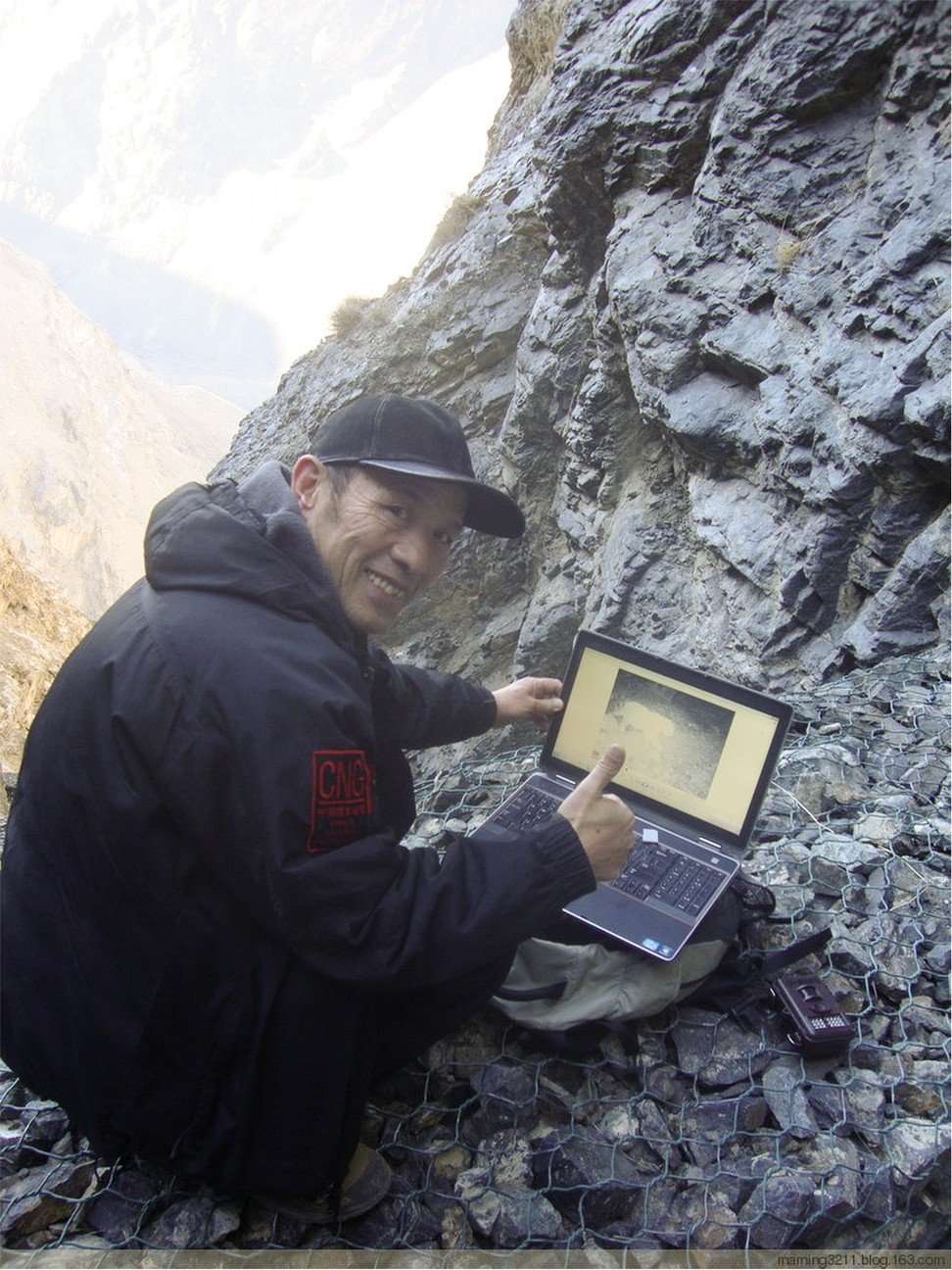
Why China is a death trap for migratory birds
Winged travellers should stay far away from inhospitable China, says ornithologist Ma Ming as he relates a heartbreaking tale of a Russian falcon that went missing after venturing into the mainland
Even for a well-travelled ornithologist like Ma Ming, losing contact with a falcon was upsetting.
“It was like a little girl went missing on her way home from kindergarten,” the Chinese bird specialist said of the day Russian researchers told him they had stopped receiving signals from the big saker falcon they had been tracking for months.
“Anything [that] happened to her at such a young age would be tragic. She still had a lot of world to see.”
From the day it was born, a GPS tracker strapped to the back of the saker falcon known as Rusa09 had been sending scientists data about the bird’s whereabouts and habits.
Saker falcons are major travellers. They are known to migrate from Russia to Tibet and then fly back north through the high plateaus of Qinghai and the vast deserts and mountains of Xinjiang.
But as a study by Ma’s friend, Russian ornithologist Igor Karyakin, found, fewer than a third have been known to survive their rigorous initial first journey and make it home safely.
Endangered black-faced spoonbill numbers dwindle again as wetland habitats in Hong Kong and Shenzhen degrade
It was Karyakin who tagged Rusa09 and set up the bird’s tracking programme after its birth last summer in Russia’s Altai Mountains.
At Karyakin’s invitation, Ma, who lives in Urumqi, in northwestern China’s Xinjiang territory, agreed to help the Russian scientists determine what happened to the saker falcons that had failed to complete their migratory journey, on the China side.
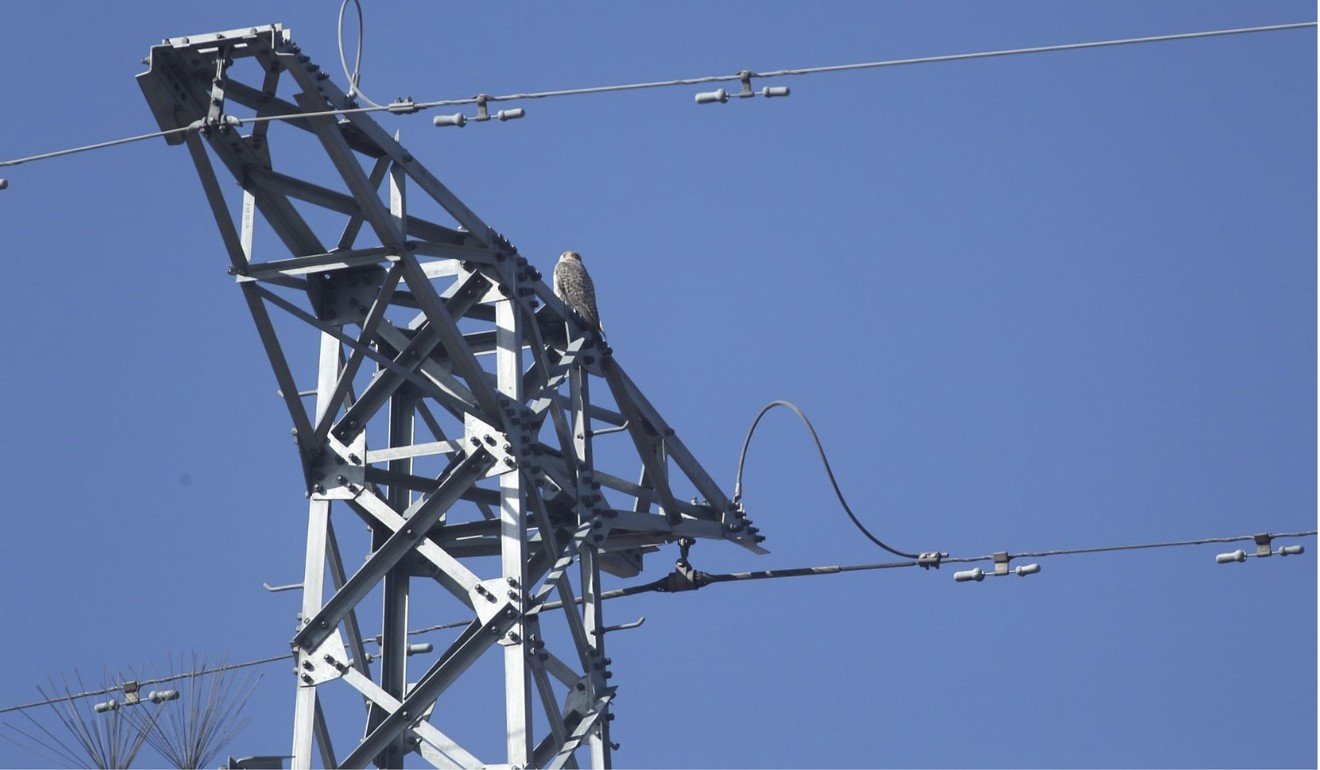
“Science has no border, nor do the birds,” Ma said.
Rusa09 was less than one year old when the signals stopped issuing from its tracker.
The last transmission was sent on March 2, from the Kalamaili Nature Reserve, near the China-Mongolia border, some 500 kilometres from Urumqi.
The loss of communication suggested the bird was in trouble – or perhaps had met a bad end.
That possibility spurred Ma Ming into action.
The retired university professor jumped into his four-wheel drive vehicle with his dog and a graduate student – the only assistant he could find during the winter break – and zoomed out of Urumqi, Xinjiang’s capital, as fast as he could legally drive.

Hours later, when the pair had reached the nature reserve and were driving through the protected zone, Ma’s heart sank.
A high voltage power line stretched over the site. Nearby, a giant pylon, its insulators missing, stood impassively, its circuits exposed to air.
Ostriches run amok on busy road in southwest China
Ma wondered if Rusa09 had met the same fate as another falcon he and his colleagues had tracked internationally to a site just like this.
When that bird was found – dead – it was determined the cause had been a high-power discharge from a transmission tower.

It was Ma’s belief that the proliferation of towers in China’s deserts – carrying electricity from power plants in the coal-rich west to developed regions in the east – was among the major reasons China had turned into a deathtrap for migratory birds.
The list of suspected killers also included industrial pollution and farmers’ increasing use of pesticides.
Chinese zookeeper launches violent attack on red-crowned crane after it pecks at him
It did not take long for the pair to discover the corpses of several birds. Some were on top of an electricity pylon – strengthening Ma’s distaste for the elements of civilisation that impaired the movements and lives of birds.
But they could not find Rusa09 – or its body.
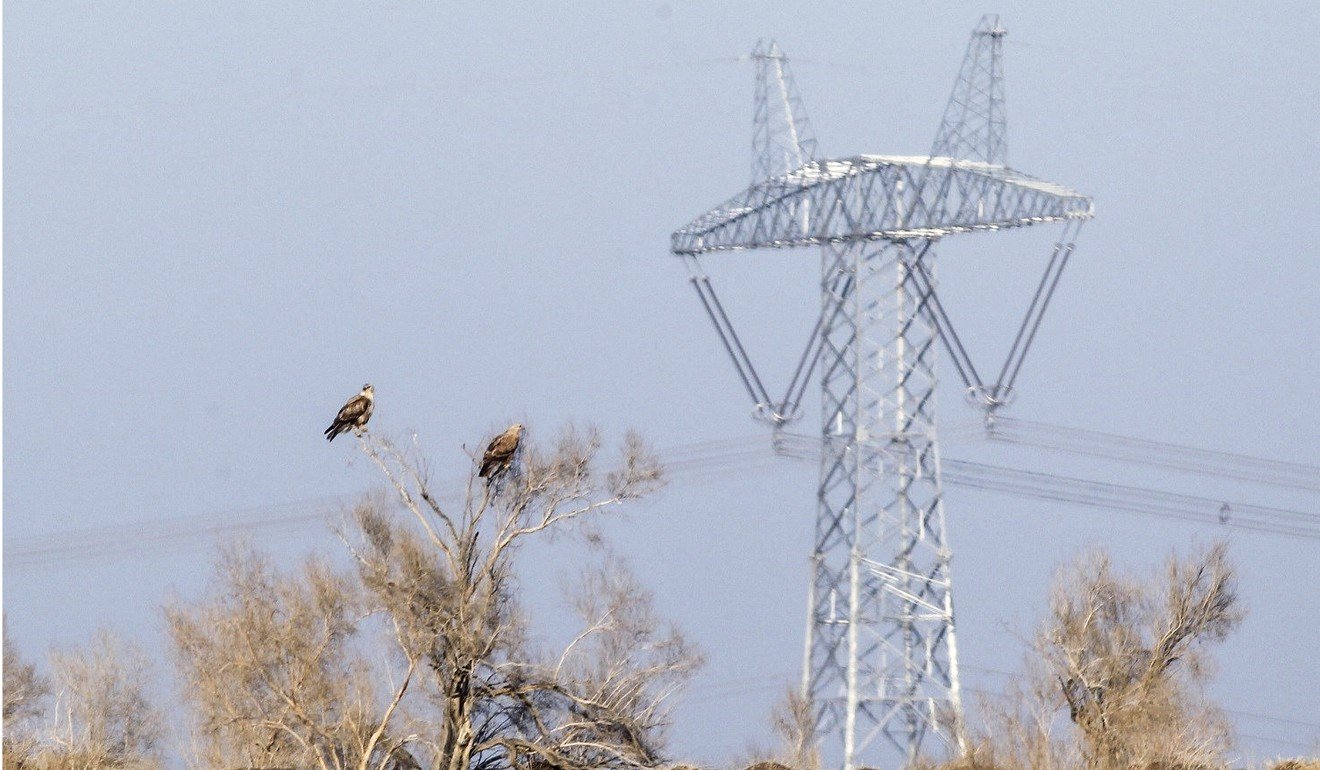
“The greyish feather of the saker falcon could blend in perfectly with the rocky landscape of the Gobi,” Ma theorised.
“It is possible to overlook the bird while it is lying right at your feet, thanks to millions of years of evolution.”
After a few days of fruitless searching, they left. Following a brief rest at home, they returned to the site.
Beginning of the end? No baby endangered right whales have been seen this season
Once again, they went over the grounds of Kalamaili Nature Reserve, where the last signals had been detected from Rusa09, two small figures against the expanse of one of the country’s largest wildlife parks.
On March 16, as the sun sank over the arid steppe ecosystem, a discouraged Ma was about to declare the second search a failure.
Suddenly, in the dimming light, Ma heard his assistant cry:
“It’s here!”

Ma rushed over to look. He saw the remains of Rusa09 half-buried in sand, about 70 metres from the spot pinpointed by the bird’s GPS-based tracker.
“I almost ran over it with my car,” Ma said. “There was a tyre track right next to it.”
Rusa09 appeared to have been dragged to that spot by an external force.
It had died before it reached there.
More action urged on invasive alien wildlife in Hong Kong
But the bird’s remains showed no bite marks or other signs of physical injury. Moreover, its feathers were in good condition – with no burn marks.
That ruled out a fatal high voltage jolt from an electricity pylon as a probable cause of Rusa09’s death. A later autopsy also ruled out poisoning.
The fierce devotion with which Ma had tackled the mystery of Rusa09’s disappearance was typical of the scientist.
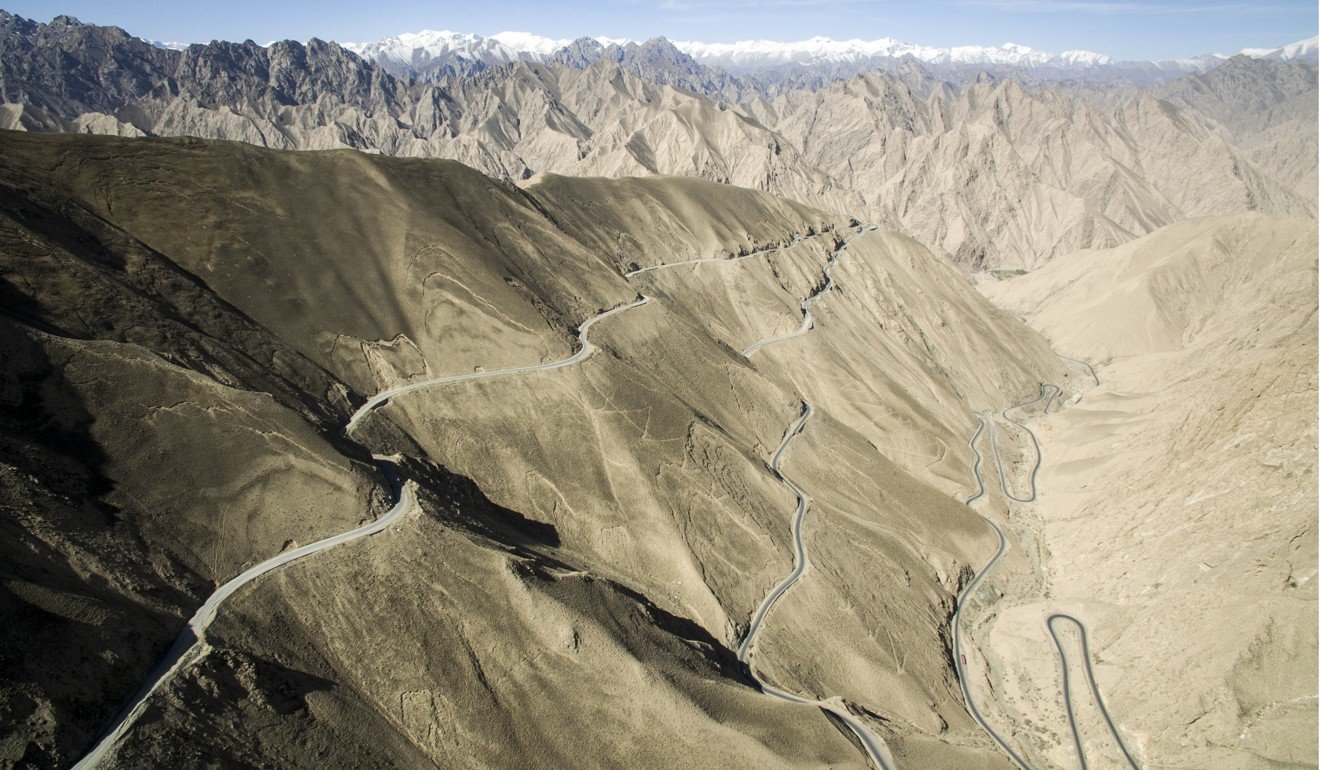
Over four decades of chasing winged creatures globally, he had made their protection and preservation a personal cause.
Observing and studying the behaviour of birds had taken him from the Australian outback to the fertile plain of Latvia; from the snow-capped mountains of Japan to the Malaysian rainforest; from the boundless grassland of Mongolia to the bustling urban expanse of Hong Kong.
Last male northern white rhino dies, hailed as ‘great ambassador’
He had viewed the patterns of wans, storks, eagles, snow cocks, jays and every other avian species he could find since the 1980s.
But he made his mark mainly on the high plateaus of Tibet and the remote deserts of Western China.
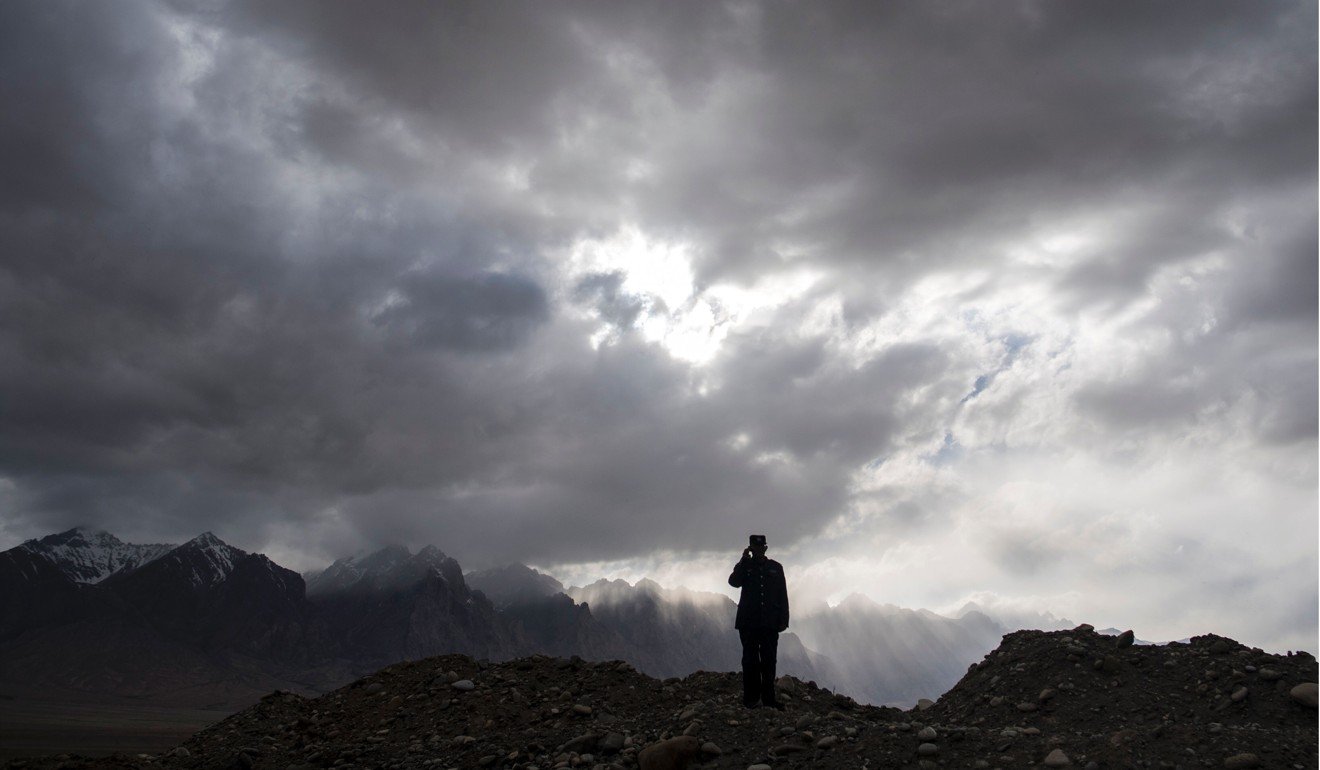
That was where Ma had produced such important work as fully cataloguing all the known and newly found bird species in Xinjiang, his birthplace.
Although he had built his reputation as a globe-trotting ornithologist, China’s growing inhospitality to migratory birds made Ma wish the winged travellers would skip their visits to his native land.
Fox in the Lion City: beast found in Lantau gets new home in Singapore
“I hope the birds could hear my prayers: don’t cross the border,” Ma said. “Go to any other country. Never come to China.”
Ma’s conflicting feelings about the winged and non-winged worlds were developed long ago, as he increasingly realised the outdoors was where he belonged.
As a young man, he first worked in a factory that was run in a military fashion. He did not like it.

“I am a man of nature,” he declared. “I’d rather expose myself to the hardship and danger in the wild than deal with the sophisticated network of interpersonal relationships.”
He left the factory to study agriculture in a local university. After graduation, he joined the Xinjiang Institute of Ecology and Geography at the Chinese Academy of Sciences in Urumqi.
There he would remain, until his retirement, last year.
In the interim he lived a bird-watcher’s life that was never short on surprise or excitement.
Three years ago, the automatic cameras he had planted in the rugged Tianshan mountain in northern Xinjiang snapped more than 40 precious photos of snow leopards, more than a decade after the predator was last seen in the region.

“The best part of this job is you get paid to visit all sorts of places on this planet and you can have the work done while absorbing all the breathtaking views,” Ma said.
The worst part? That was coming upon animals that had died at the hands of human beings – an encounter that seemed to happen all too often.
But the official cause of Rusa09’s death appeared destined to remain a mystery.
Eight endangered animals back from the brink in China
The autopsy that had ruled out poisoning as a cause of the falcon’s death also showed that its stomach was empty.
The implications of that finding were not clear; but it did prove one thing, at least in Ma’s mind: along with the hunters and demand for their meat, the survival of northern China’s migratory birds is being challenged by another factor, one deserving its own story:
“There is not enough food in China,” Ma said.


